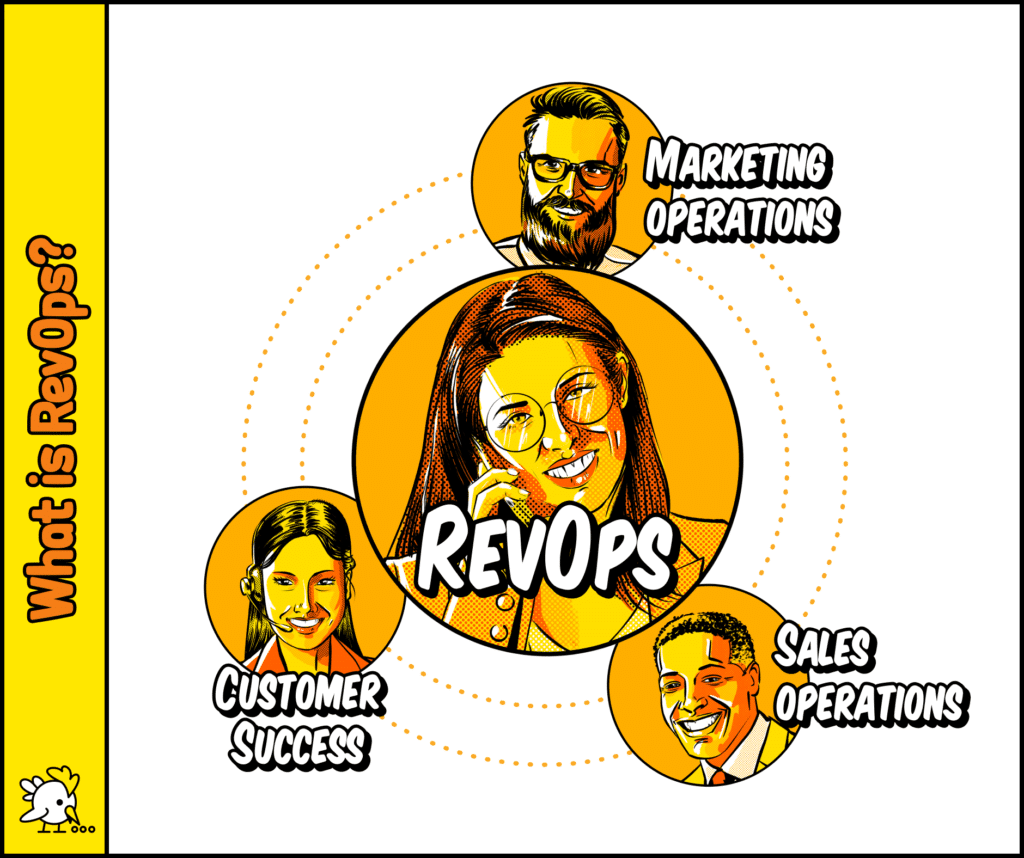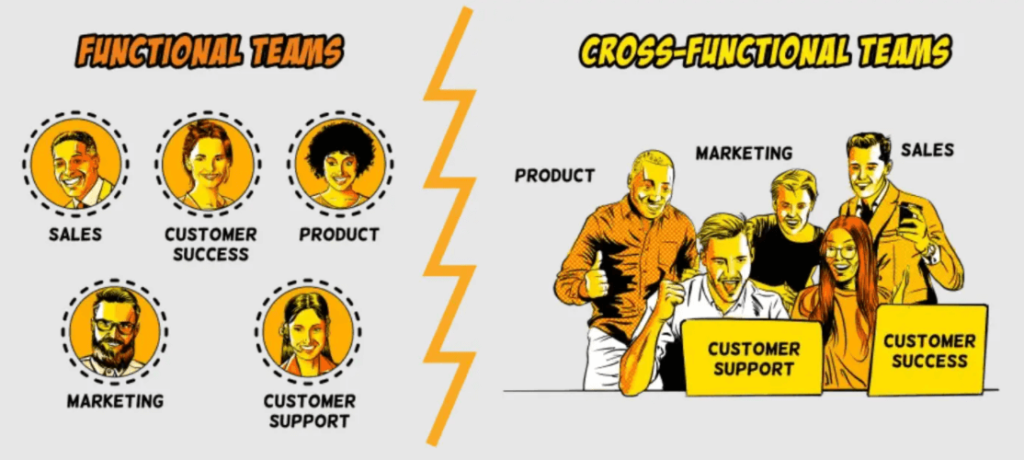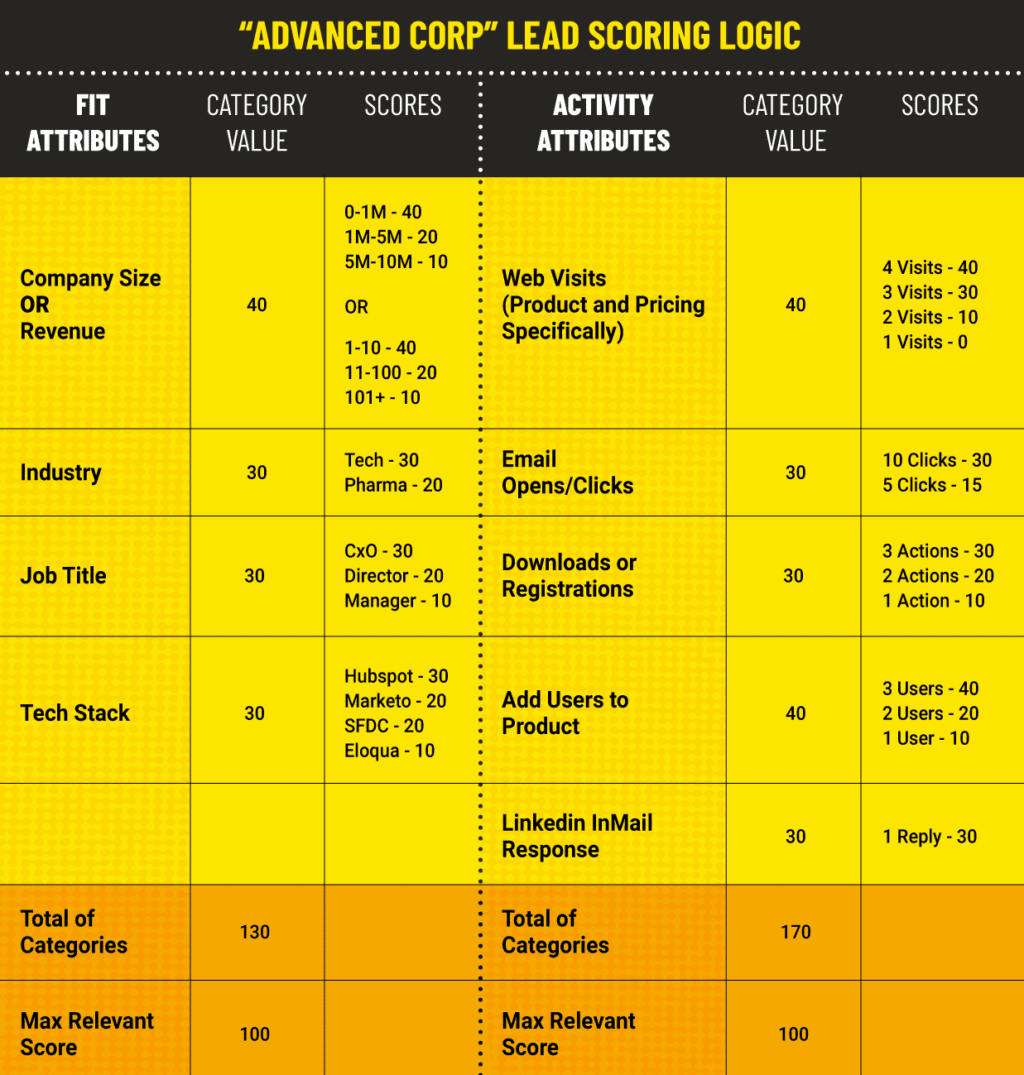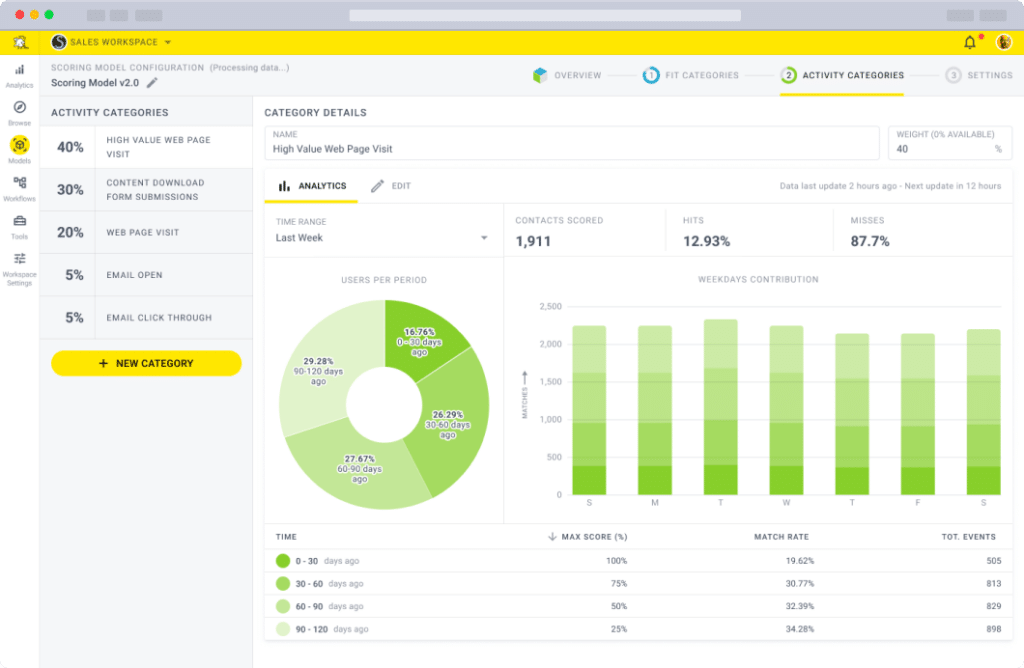Revenue operations, more commonly known as RevOps, is a strategic approach that aligns marketing operations, sales, and customer success teams to drive revenue growth.
RevOps aims to optimize the entire customer lifecycle, from lead generation to retention and expansion. It does so by breaking down silos, fostering better communication, streamlining processes, and leveraging data and technology.
Through cutting-edge technologies like Breadcrumbs, which uses AI for predictive lead scoring, RevOps teams streamline better decision-making protocols to optimize a business’s revenue generation strategy.
Implementing RevOps isn’t a one-time project. It requires a continuous effort to learn and adapt to changing customer needs, market conditions, and business goals.
That’s why having a RevOps playbook is essential to tackle operational inefficiencies and build scalable and effective RevOps strategies.
What is a RevOps playbook?
A RevOps playbook is a document that provides a clear and comprehensive framework for revenue growth.
It defines the vision, mission, objectives, and metrics of RevOps, as well as the roles and responsibilities of each team involved.
You can think of a RevOps playbook as one step above the sales playbook.
Sales operations focus more narrowly on improving and assisting the sales function. Meanwhile, revenue operations take a holistic view of the entire revenue cycle, aligning departments to drive revenue.
Their respective playbooks reflect these scopes, with Sales Ops being more specialized and RevOps being more comprehensive.
It also outlines the processes in the revenue pipeline, as well as the tools and best practices for executing RevOps across the customer journey.
The role of a RevOps playbook
Using playbooks in business is proven to be effective. For example, sales teams and sales reps who use them are 33% more likely to be high performers than those who don’t. Plus, 87% of team leaders agree that collaboration between sales and marketing fuels business growth.
A RevOps playbook has several benefits for businesses that want to grow their revenue:
- It fosters alignment and collaboration among marketing, sales, and customer success teams, ensuring they work towards the same goals and share the same data and insights, turning your business into a revenue engine.
- It improves efficiency and productivity by eliminating redundancies, automating tasks, and standardizing workflows.
- It enhances scalability by providing a consistent and repeatable methodology for revenue generation that can be applied to different segments, markets, and products.
Integrating lead scoring into a revenue operations (RevOps) strategy
One of the key components of a RevOps strategy is lead scoring. In other words, you assign numerical values to leads based on their fit and interest in your product or service.
Lead scoring helps businesses prioritize their efforts, optimize their operations, and drive revenue growth by:
- Identifying high-value leads that fit into your ideal customer profile and are more likely to convert and become loyal customers.
- Allocating resources more efficiently by focusing on the most promising leads and nurturing them through personalized campaigns.
- Enhancing customer satisfaction and retention by delivering relevant and timely solutions that match their needs and expectations.
Predictive and AI-powered lead-scoring
Despite its importance for revenue teams, lead scoring isn’t always as effective as it could be.
Traditional lead scoring relies on manual rules and assumptions that may not reflect the true potential of leads. Moreover, it can be time-consuming and prone to errors.
Integrating predictive analytics into lead scoring through solutions like Breadcrumbs can take your RevOps strategy to the next level.
Predictive analytics uses advanced algorithms and machine learning to analyze historical and real-time data from multiple sources (such as website behavior, email engagement, social media activity, etc.) to generate accurate and dynamic lead scores.
Building a scalable RevOps strategy in 5 steps
Now that you understand the role of a RevOps playbook and how to integrate lead scoring into your RevOps strategy, it’s time to create a scalable RevOps strategy for your business.
Here are five steps that you can follow.
Step #1: Set clear objectives
Define what you want to achieve with your RevOps roadmap, such as increasing revenue, market share, customer lifetime value, etc. It’s always worthwhile to set SMART objectives (specific, measurable, achievable, relevant, and time-bound).
Step #2: Clearly define roles and responsibilities
Revenue operations team structure is an important part of your RevOps strategy’s success.
That means assigning clear and distinct roles and responsibilities to each team involved, such as marketing, sales, customer success, operations, etc.
Step #3: Set up an efficient tech stack
Regardless of your niche, you’ll find many software tools optimized for different departments.
For example, with a value of over $325B, the martech industry offers thousands of tools for marketing automation. Other tools include CRM, lead scoring, and analytics tools, and many others.
Statistics show that companies today use an average of 976 applications as part of their workflow, yet only 28% of these are integrated, resulting in siloed users.
As part of your RevOps strategy, it’s critical to choose the right tech stack and ensure that your tools are integrated and synchronized to provide a unified view of your data and insights.
Doing this allows for closer alignment between previously siloed departments.
Step #4: Develop your RevOps playbook
Once everything is set up, the next step is to craft the playbook itself. We’ll go over what elements to include in the next section. For now, keep in mind that this isn’t a set-it-and-forget-it step.
The RevOps playbook is meant to be a dynamic document that changes and adapts over time, feeding from the feedback and experience of all teams involved.
Step #5: Implement, monitor, and optimize your playbook
Once your playbook is ready, take all the necessary steps to share it with every member of your RevOps team. Have everyone read the entire playbook and hold a Q&A meeting to share feedback and answer questions about its content, implementation, and control.
Once you’re satisfied that everyone is on the same page and has a deep understanding of the playbook’s importance, it’s time to start using it in your revenue pipeline.
It’s also advisable to hold regular update meetings to discuss results and how to improve and optimize the RevOps strategy.
Key elements to include in your RevOps playbook
Now you know the steps to create a playbook, but what should you include in it? Here’s a brief breakdown of the elements to consider.
Overview of the revenue operations function
The playbook’s first section explains the purpose and scope of your RevOps playbook, as well as the background and context of your revenue operations function.
It must also clearly state the goals and objectives of the RevOps team, and you can include your RevOps vision and mission statements, showing how they align with your business goals and values.
Strategy
Your RevOps strategy is the plan that guides your revenue operations to realize the organization’s revenue potential. The strategy section details:
- Your target market
- The unique value proposition
- Your go-to-market model
- Revenue channels, and
- Key performance indicators, among others.
You can also describe how you align your marketing, sales, and customer success teams around a common vision and mission.
Technology stack
As in all essential playbooks, the RevOps playbook should document and describe the set of tools and platforms that support your revenue operations.
You can include the software, hardware, applications, and integrations that you use, as well as their functions, features, benefits, and costs. You can also describe which members of the team use each platform.
RevOps roles and responsibilities
No playbook is complete if it doesn’t clearly identify who does what at every stage of the process.
Whether it’s outlining the specific responsibilities of the marketing team or what you expect from your sales reps, the RevOps playbook must show what each member of the RevOps team will do and what they’re accountable for.
Relevant data
In this section of the playbook, you should specify and describe your RevOps data requirements, which are the data sources, types, formats, quality, and governance that you need to manage and optimize your revenue processes.
You can include the metrics and dashboards you use to measure and monitor your performance, as well as the insights and feedback that you generate for continuous improvement.
Processes and workflows
The bulk of the RevOps playbook is the RevOps process and workflow design. In this section, you should describe the end-to-end revenue process that spans the customer life cycle and detail your RevOps workflow implementation.
The former involves the steps, tasks, inputs, outputs, and dependencies of each process stage, as well as the best practices and standards to follow. The latter describes the manual and automated activities that create an interconnected revenue process.
Analysis methods
Your RevOps analysis methods are the activities that monitor and measure your revenue process outcomes. Here, you can include the data, analytics, reporting, and visualization tools your team should use to track and evaluate your progress and results.
You can also show how you support decision-making and problem-solving for your RevOps function.
Summary
At the end of your playbook, you should summarize its contents and main takeaways. You can also include a call to action for your readers to implement or improve their own RevOps function and provide additional resources or references for further learning or guidance.
Best Practices for Implementing a RevOps Playbook
Here are some best practices that can help you successfully implement a RevOps playbook.
Plan for and foster cross-team collaboration
One of the main goals of RevOps is to align marketing, sales, and customer success teams around a common vision and goal. To achieve this, you need to foster a culture of collaboration among teams, which means:
- Sharing data and insights across teams
- Establishing regular meetings and feedback sessions
- Creating cross-functional teams and projects
- Celebrating wins and successes together
According to Zippia, fostering team collaboration can increase:
- Customer satisfaction by 41%
- Product quality by 34%
- Product development by 30%
- Sales by 27%
Adopt data-driven decision-making in your RevOps team
Another key aspect of revenue operations is to use data and analytics to guide your RevOps team’s decisions and actions, which implies:
- Collecting and analyzing relevant data from multiple sources
- Setting up dashboards and reports to track your metrics
- Using predictive analytics to anticipate customer behavior and needs
- Experimenting with different scenarios and hypotheses
- Learning from your failures and successes
Take the time to continuously learn and adapt
RevOps is a dynamic and evolving process that requires constant learning and adaptation, which means:
- Keeping up with the latest trends and best practices in RevOps
- Seeking feedback from your customers and stakeholders
- Evaluating the impact of your RevOps strategy on your business outcomes
- Making adjustments and changes as needed
Future trends and considerations for RevOps teams
RevOps isn’t a fad or a buzzword. It is a strategic approach to revenue generation that’s here to stay. As the business landscape changes, so will the trends and considerations in RevOps.
Here are some of the future trends and considerations that you should keep in mind when planning your RevOps strategy:
- Data integration: Data can be fragmented, siloed, or inconsistent across different systems and platforms. The first trend in RevOps is to integrate all data sources into a single source of truth that can provide a holistic view of a company’s customer journey.
- AI and machine learning: AI and machine learning are powerful technologies that can enhance your RevOps strategy by providing predictive insights, automation, personalization, and optimization. As in all industries, AI is making a big impact on RevOps through platforms like Breadcrumbs.
- Customer-centric operations: Customer-centricity is the core principle of RevOps. Today, the most successful revenue operations are geared toward generating a superb customer experience, improving customer retention, and reducing customer churn rates.
A well-guided revenue operations team is the key to business growth
RevOps is a strategic approach that aligns marketing, sales, and customer success teams to drive revenue growth. Implementing RevOps requires a clear and comprehensive framework to guide your team across the customer journey. That’s why having a RevOps playbook is essential for building scalable and effective RevOps strategies.
A RevOps playbook defines the vision, mission, objectives, and metrics of RevOps, as well as the roles and responsibilities of each team involved. It also outlines the processes, tools, and best practices for executing RevOps across the customer journey.By following the steps and best practices outlined in this post for creating and implementing a RevOps playbook, you can build scalable and effective RevOps and customer success strategies that help you realize your revenue potential.








